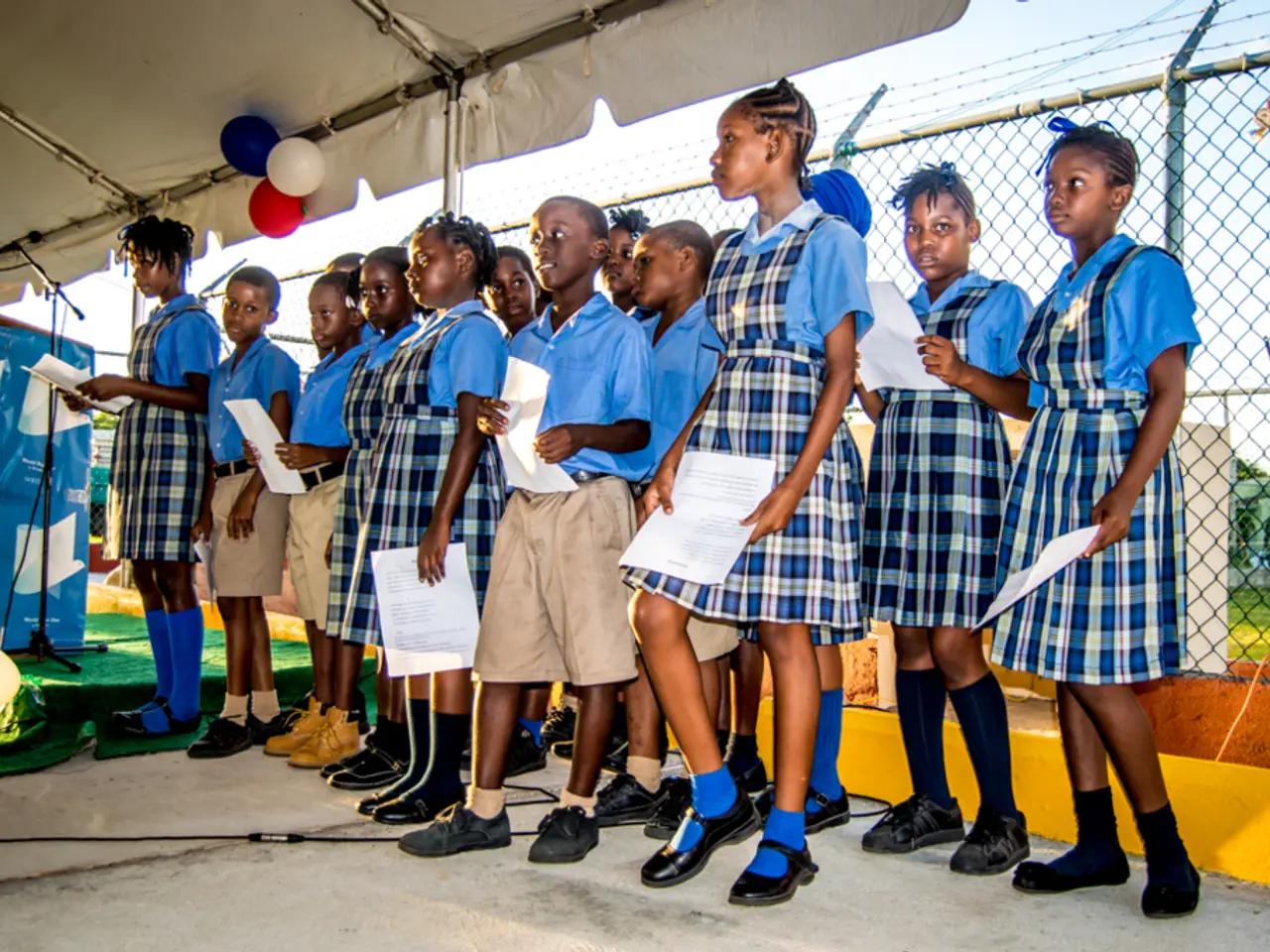Escalating hostility towards educators: school officials issue cautionary warnings
School violence, particularly against teachers, has become a pressing concern worldwide. Gerhard Brand, federal chairman of the VBE, has called on politics to take the protection of teachers seriously and implement targeted measures for school safety.
According to recent data, 97% of physical attacks against teachers are perpetrated by students, with parents responsible for 79% of cases of psychological violence. Preventive work is hindered by staff shortages, with four out of five school principals identifying this as a barrier.
Brand believes that politics should finally implement targeted measures to ensure safety at schools. The VBE echoes this call, demanding that municipalities be held more accountable and financial support for security measures be increased. They are concerned about the insufficient equipment with security measures in schools.
In response to a 77% rise in school violence since 2018, local authorities and unions in Ontario, Canada, are calling for emergency plans that include hiring more qualified staff, such as educational assistants and mental health professionals, to better support student needs and create safer environments. The Ontario government has increased funding for school safety initiatives, though critics argue more action is needed.
Internationally, frameworks like the ASIS International School Security Standard (expected in late 2025) are being formulated to create a consistent, comprehensive approach to school security. This standard promotes preparedness and prevention strategies addressing physical security, behavioral threat assessment management, and emergency operations planning to reduce bullying, violence, and mental health incidents in K-12 schools.
At a global level, intergovernmental commitments such as the Safe Schools Declaration aim to protect students, teachers, and educational facilities from violence and conflict, emphasizing the need for education to be treated as a sanctuary even during times of crisis.
Key governmental and institutional measures include increasing funding and staffing in schools for mental health support, educational assistants, and frontline staff to better manage behavior and support vulnerable students. Developing and implementing comprehensive security standards like the ASIS School Security Standard are also critical, focusing on prevention, risk assessment, and emergency planning.
Political commitments and cooperation through initiatives like the Safe Schools Declaration are essential to protect education from violence on a global scale. Calls for emergency safety plans and school violence prevention strategies that balance firm enforcement of codes of conduct with improved student supports are also necessary.
Brand has emphasized the intolerability of teachers being victims of violence while performing their duties. He calls for closer cooperation with state institutions and more support from multidisciplinary teams in addressing school violence. Only about half of the school principals feel they can adequately support affected teachers due to uncooperative perpetrators, bureaucratic hurdles, or lack of support from school authorities.
Violence by external adults, blaming teachers for political decisions during the COVID-19 pandemic, has been documented for the first time. Nearly two-thirds of school principals report an increase in violence over the past five years. Almost one in five school principals report that school authorities do not want to report cases of violence.
These multifaceted approaches reflect a growing recognition that addressing school violence requires combining policy, staffing, mental health resources, physical security, and international collaboration to create safer educational environments for students and teachers alike.
Read also:
- Unique calendar add-on commemorates the rich history of the LGBTQIA+ community - grab it now
- Enduring the intense heat yet finding solace in an extraordinary videogame? Its price slashed too, imagine that! I'm not shy about telling everyone.
- Understanding the Concept of Brand Identity Design and Its Importance
- Discussion with Rae Perez '19: Architectural Autonomy Explored




